Long before smartphones and 24-hour news cycles, Utahns were getting their daily scoop the old-fashioned way—through ink-stained fingers and the satisfying rustle of newspaper.
From the moment Latter-day Saints established their roots in the Salt Lake Valley, they were eager to spread information, share opinions, and yes, occasionally squabble in print. In a place where communities were often isolated by mountains and desert, newspapers became the lifeblood of connection—bringing the world to pioneer doorsteps and helping shape Utah's unique identity.
Let's flip through the pages of history and discover how Utah's newspapers have been telling the state's story since 1850.
A Few Utah Newspapers
Deseret News
If newspapers were family members, Deseret News would be the grandparent with stories that predate almost everyone else at the reunion. Founded in June 1850—just three years after pioneers entered the valley—it claims the title of one of the oldest continuously published newspapers west of the Mississippi River.
The first issue declared its motto: "Truth and Liberty." It promised to "record the passing events of our State, and in connexion, refer to the arts and sciences, embracing general education, medicine, law, divinity, domestic and political economy, and every thing that may fall under our observation."
In other words, they weren't just planning to cover barn raisings and Church announcements—they wanted to be the intellectual and cultural compass for the fledgling territory.
For over 170 years, Deseret News has continued to inform Utahns through wars, depressions, technological revolutions, and even a pandemic and changing interest in print news that forced it to adapt in 2020 by moving to a weekly print edition. Like many of us who've had to adapt our relationship with physical media in the digital age, Deseret News has evolved while maintaining its core identity.
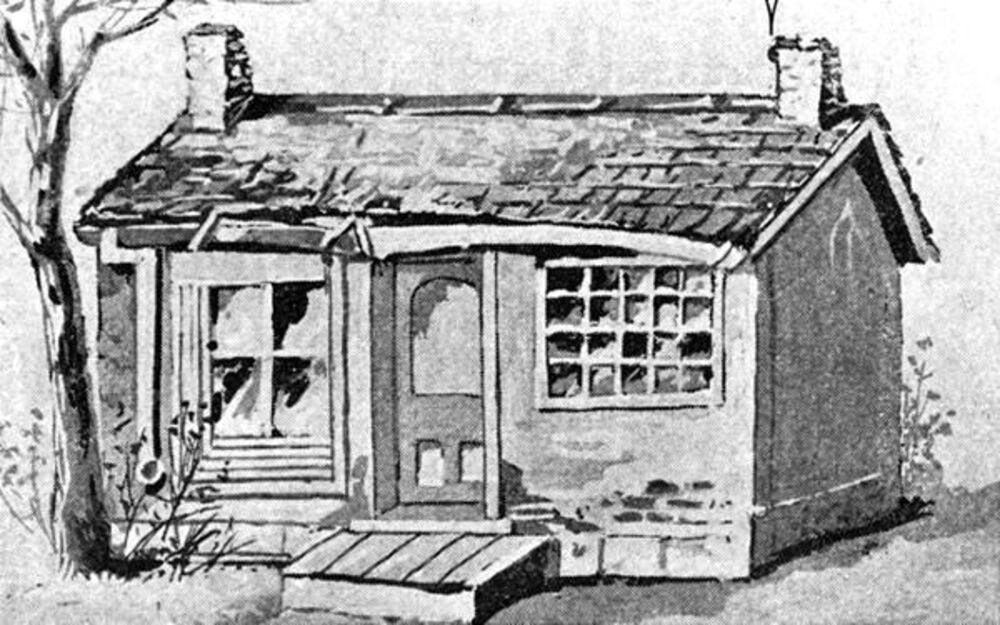
Valley Tan
Not everyone in territorial Utah was singing from the same hymnal, so to speak. In 1858, Kirk Anderson printed the first edition of Valley Tan, generally considered the second newspaper in the territory and notably anti-Mormon in its stance.
The name itself has an interesting origin story. As Anderson explained in the first edition:
Valley Tan was first applied to locally tanned leather . . . gradually expanding to refer to any item made or produced in the Territory, signifying Home Manufacturers. It has become an indispensable word in Utah’s vernacular and may yet add a new word to the English language. Circumstances and localities shape our language, and so we stamp the name and put it into circulation!
Though it only lasted two years, Valley Tan represents something consistent in Utah's newspaper history—the beginning of a press that wasn't aligned with the dominant religious and political power. This tradition of alternative voices would continue throughout Utah's history.
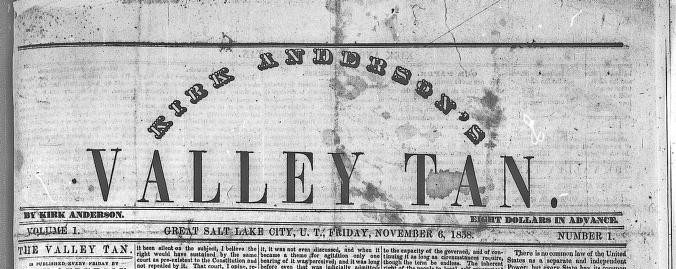
The Salt Lake Tribune
Speaking of alternative voices, The Salt Lake Tribune entered the scene in April 1871, declaring itself "a purely secular journal" that would "oppose the undue exercise of priestly authority," and pledged that it "will have no sectarian bias and will be the organ of no religious body."
The Tribune was founded by William S. Godbe, Elias L.T. Harrison, Edward W. Tullidge, and William H. Shearman—excommunicated members of the Church of Jesus Christ of Latter-day Saints who had embraced spiritualism. The Godbeites, as they became known, held séances and claimed visitations from the spirits of Joseph Smith, the apostles Peter, James, and John, and even the German naturalist Alexander Humboldt—who allegedly urged them to overthrow the “Mormon theocracy.” They eventually formed their own sect, the Church of Zion.
By 1873, the Tribune was struggling financially and was sold to a group of Kansas businessmen who sharpened its anti-Church tone to boost circulation. In 1901, it was purchased by mining magnate and U.S. Senator Thomas Kearns, who moderated its rhetoric but maintained its role as a foil to the Deseret News.
In an ironic turn, the two rival papers partnered in 1952, merging their printing, advertising, and circulation operations to reduce costs—a practical arrangement that lasted until 2020. One year prior, in 2019, the Tribune took another historic step by becoming a nonprofit, reinventing itself once again to survive the pressures of a changing media landscape. Today, the Salt Lake Tribune continues its tradition of editorial independence and criticism of the Church and its influence in Utah public life.

Broad Ax
In 1895, Julius F. Taylor launched the Broad Ax, one of the first newspapers in Utah created for Black Americans.
Taylor used his platform to encourage his fellow Black Americans to support the Democratic Party, a controversial and unusual take at the time. The paper proudly invited "a full and free discussion through our columns by any one of the questions now before the people and we will be pleased to publish any contribution expressing an individual opinion if brief and free from personality."
Perhaps most importantly, Broad Ax interviewed Alex and Marinda Bankhead, providing a rare firsthand account of the experiences of enslaved people in Utah—stories that might otherwise have been lost to history. Taylor moved the paper to Chicago in 1901, but its brief time in Utah left a mark on the state's journalistic legacy.

Utah Nippo
Founded in 1914 by Issei Uneo Terasawa, the Utah Nippo served Japanese Americans in Salt Lake City for nearly eight decades. Originally created as a Buddhist-oriented alternative to the Rocky Mountain Times (the other Japanese language newspaper, which had a Christian orientation), it grew quickly and eventually merged with the Times in 1927. When Terasawa died in 1939, his wife, Kuniko Muramatsu Terasawa, stepped in.
What makes Utah Nippo especially significant is that it continued publishing throughout World War II—one of the few Japanese American newspapers able to do so because Utah was outside the West Coast's restricted areas. During a time when Japanese Americans faced internment and widespread discrimination, Kuniko led the Utah Nippo to preserve Japanese American voices and a sense of connection to a community under incredible strain.
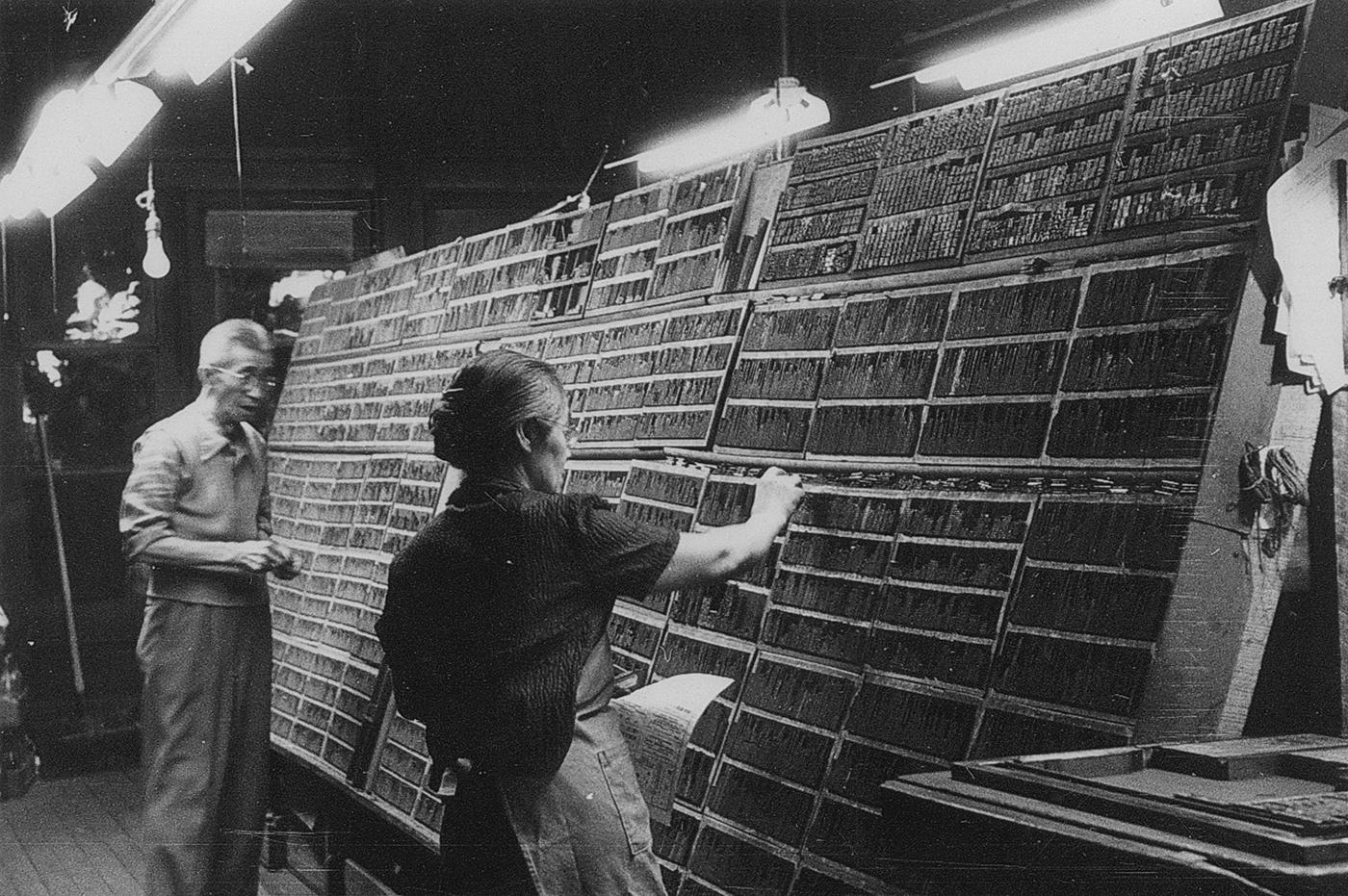
Truth
With a name like Truth, you'd expect a newspaper to make bold claims about being the definitive source of information. But when this weekly debuted in 1901, it positioned itself as something more nuanced—an independent voice that found middle ground between the pro-Mormon Deseret News and the often anti-Mormon Salt Lake Tribune.
Truth covered local issues, including the decline of polygamy as the Church moved away from the practice. In 1908, it underwent a transformation, rebranding as the Western Weekly and later becoming the travel-focused Western Monthly, serving as the official publication of the See America First League.
Think of it as your friend who thought they'd make a career in politics before ultimately deciding to pursue their passion for travel photography.
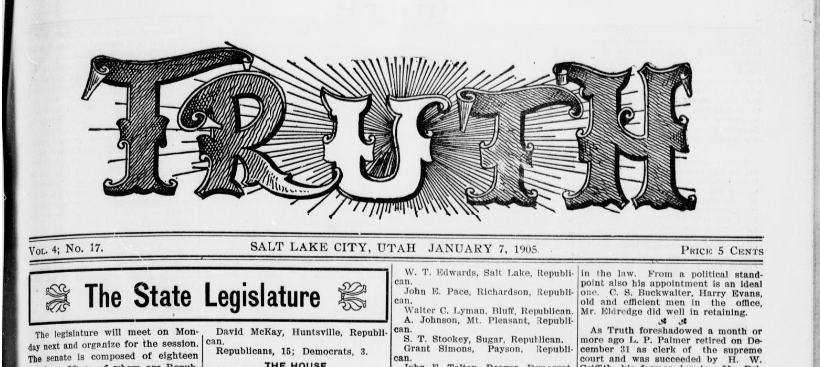
When Headlines Made History
Newspapers don't just report history—they preserve our collective experience of it.
When Pearl Harbor was attacked on December 7, 1941, the Salt Lake Tribune rushed out an extra edition that day to report the shocking news. In the days that followed, papers like the Deseret News and Logan's Herald Journal captured the initial disbelief and rapid transition to wartime resolve that swept through Utah communities.
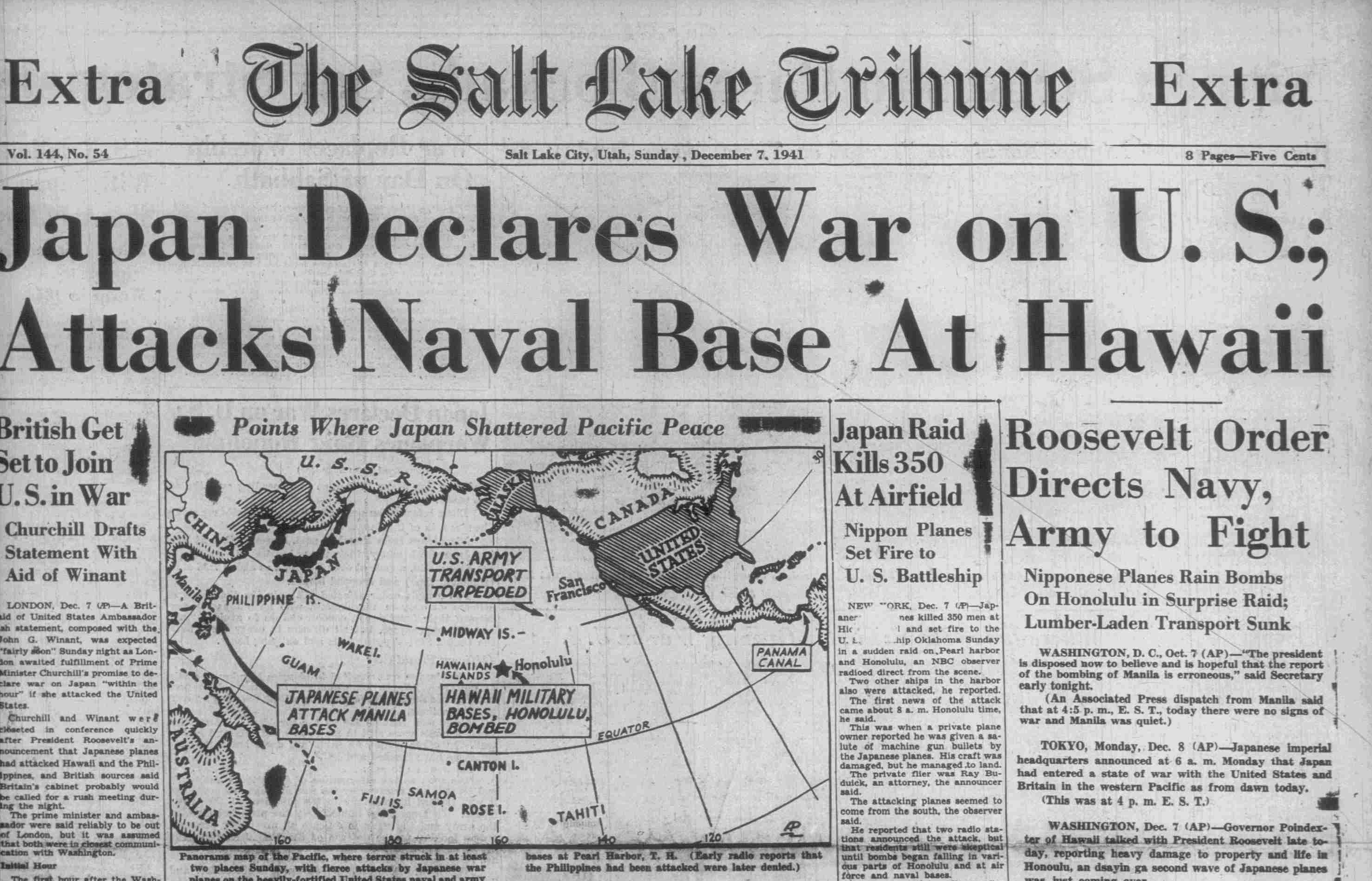
These historic newspapers have also helped mark milestones. For the centennial celebration of pioneers entering the Salt Lake Valley, Deseret News led with a nearly full-page message from the First Presidency and photos of a new pioneer monument, while smaller papers like the Price Sun Advocate and the Ogden Standard-Examiner highlighted local festivities, including a beard contest (some things certainly changed in Utah), sports, parades, and the rodeo.
And when American astronauts landed on the moon in July 1969, every paper from Deseret News and Salt Lake Tribune to the small-town local news found their own angle on the story. The Magna Times reported on the rocket parts used on the Apollo mission, celebrating their place as the home of one of the plants that created them. The Box Elder Journal wished "Good Luck, Neil, Edwin, and Michael (Our Men On the Moon)," while the Cache Citizen (printed in Lewiston, Utah) proudly noted a local connection—a resident stationed on the USS Hornet tasked with picking up the astronauts upon reentry.
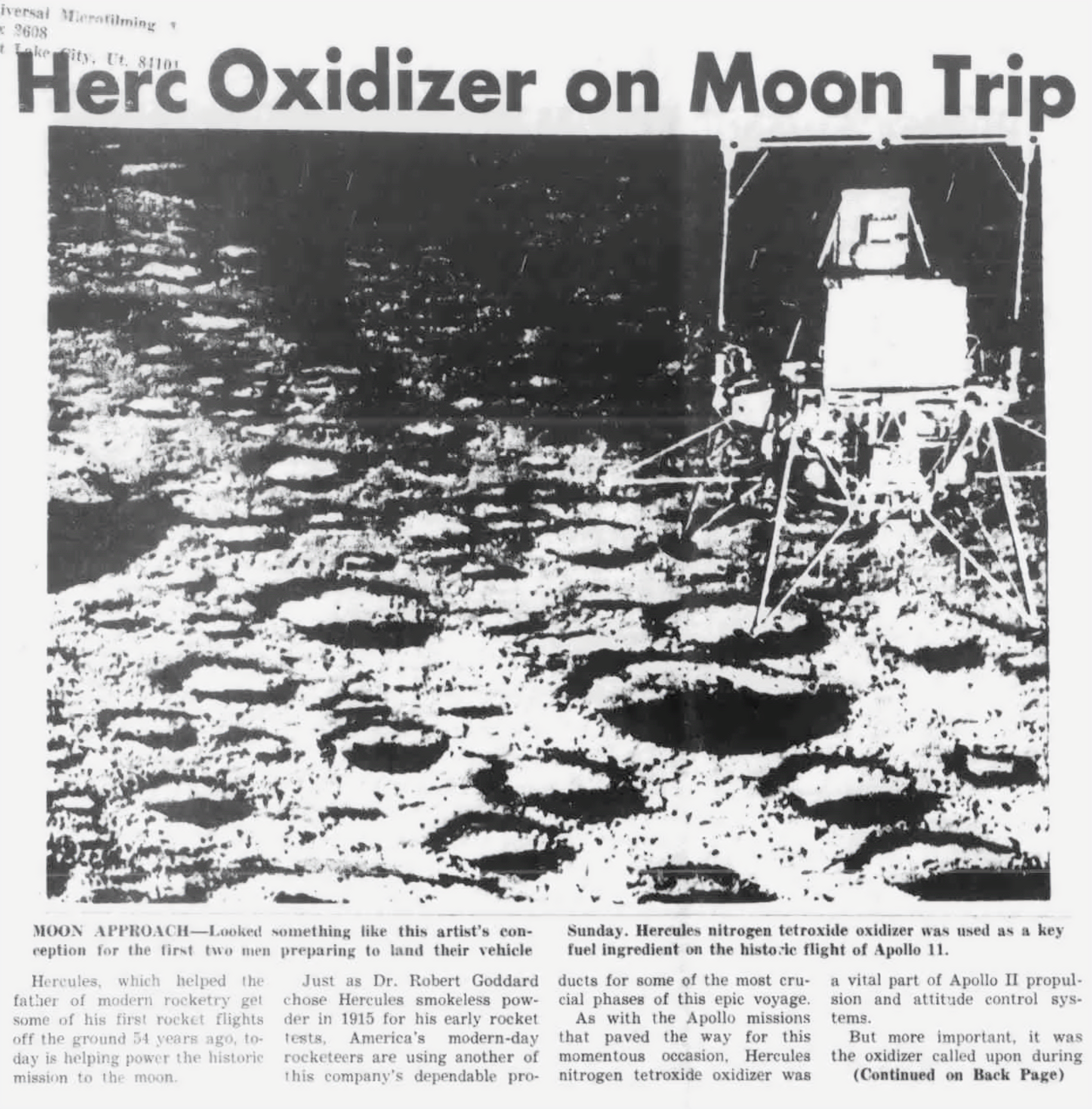
The News Goes On
The newspapers mentioned here represent just a handful of the hundreds of publications that have served Utah communities. Almost every county and town across the state has, at some point, produced its own newspaper—from the Beaver County News to the Zion's Advocate.
Whether you're researching family history, exploring local stories, or just curious about how your hometown reacted to world events, Utah's newspaper archives offer a fascinating window into the past. And thanks to the Utah Digital Newspapers project, many of these historical papers have been digitized and are available online for free, letting you experience yesterday's news today, minus the paper cuts and ink stains.
So the next time you scroll through news on your phone, spare a thought for the ink-stained pioneers who first brought the world's happenings to Utah's doorsteps one carefully typeset page at a time.
Like Mormonr? Sign up for our newsletter to receive updates on the latest blog posts, Q&As, and Mormonr projects.


